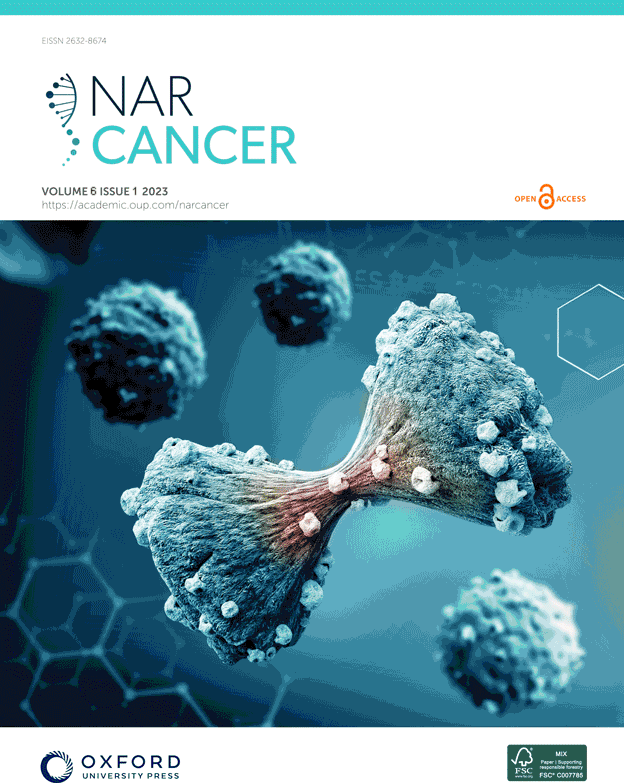Epigenetic alterations at distal enhancers are linked to proliferation in human breast cancer
IF 3.2
Q2 BIOCHEMISTRY & MOLECULAR BIOLOGY
引用次数: 4
Abstract
Breast cancer is a highly heterogeneous disease driven by multiple factors including genetic and epigenetic alterations. DNA methylation patterns have been shown to be altered on a genome-wide scale and previous studies have highlighted the critical role of aberrant DNA methylation on gene expression and breast cancer pathogenesis. Here, we perform genome-wide expression-methylation Quantitative Trait Loci (emQTL), a method for integration of CpG methylation and gene expression to identify disease-driving genes under epigenetic control. By grouping these emQTLs by biclustering we identify associations representing important biological processes associated with breast cancer pathogenesis such as proliferation and tumor infiltrating fibroblasts. We report hypomethylation at enhancers carrying transcription factor binding sites of key proliferation-driving transcription factors such as CEBP-β, FOSL1, and FOSL2, with concomitant high expression of cell cycle- and proliferation-related genes in aggressive breast tumors. The identified CpGs and genes were found to be connected through chromatin loops, together indicating that proliferation in aggressive breast tumors is under epigenetic regulation by DNA methylation. Interestingly, there was a significant correlation between proliferation-related DNA methylation and gene expression also within subtypes of breast cancer, thereby showing that varying proliferation may be explained by epigenetic profiles across breast cancer subtypes. Indeed, the identified proliferation gene signature was prognostic both in the Luminal A and Luminal B subtypes. Taken together, we show that proliferation in breast cancer is linked to hypomethylation at specific enhancers and transcription factor binding mediated through chromatin loops.远端增强子的表观遗传改变与人类乳腺癌的增殖有关
乳腺癌是一种高度异质性的疾病,由多种因素驱动,包括遗传和表观遗传改变。DNA甲基化模式已被证明在全基因组范围内发生改变,先前的研究强调了异常DNA甲基化在基因表达和乳腺癌发病机制中的关键作用。在这里,我们执行全基因组表达-甲基化数量性状位点(emQTL),这是一种整合CpG甲基化和基因表达的方法,以鉴定表观遗传控制下的疾病驱动基因。通过双聚类对这些emqtl进行分组,我们确定了与乳腺癌发病机制(如增殖和肿瘤浸润成纤维细胞)相关的重要生物学过程的关联。我们报道了携带关键增殖驱动转录因子(如CEBP-β、FOSL1和FOSL2)转录因子结合位点的增强子的低甲基化,并在侵袭性乳腺肿瘤中伴随细胞周期和增殖相关基因的高表达。发现的CpGs和基因通过染色质环连接,共同表明侵袭性乳腺肿瘤的增殖受到DNA甲基化的表观遗传调控。有趣的是,在乳腺癌亚型中,与增殖相关的DNA甲基化和基因表达之间也存在显著的相关性,从而表明不同的增殖可以通过乳腺癌亚型的表观遗传谱来解释。事实上,在Luminal A和Luminal B亚型中,已鉴定的增殖基因标记都具有预后作用。综上所述,我们表明乳腺癌中的增殖与特定增强子的低甲基化和通过染色质环介导的转录因子结合有关。
本文章由计算机程序翻译,如有差异,请以英文原文为准。
求助全文
约1分钟内获得全文
求助全文

 求助内容:
求助内容: 应助结果提醒方式:
应助结果提醒方式:


